
Language, culture, and place are inseparably linked. Indeed, they have a dynamic relationship, with language shaping culture, and culture carving place into stone. In the case of a language as old as Hebrew, a nation as ancient as the Jewish people, and a city as old as Jerusalem, understanding the interplay between language, culture, and place is absolutely key to cracking Hebrew’s code.
In this Jerusalem travel guide, you’ll learn about the top attractions in Jerusalem for visitors as well as the culture and history of this magnificent city. It has been the center of Jewish culture for several millennia, and discovering everything it has to offer will give you a much deeper insight into how much the Hebrew language mirrors the story of the Jewish people.
Each has faced many perils as well as many triumphs, and each is woven from a dizzyingly diverse loom of threads that make up the tapestry of this city and its people. But perhaps most of all, Jerusalem is an incredible living analogy of the Jews’ ability to come out of each struggle, over more than two millennia, with a stronger and richer identity. Some of this story is set in stone (like at the Western Wall), and some of it is ever-changing (like the Jerusalem skyline of today).
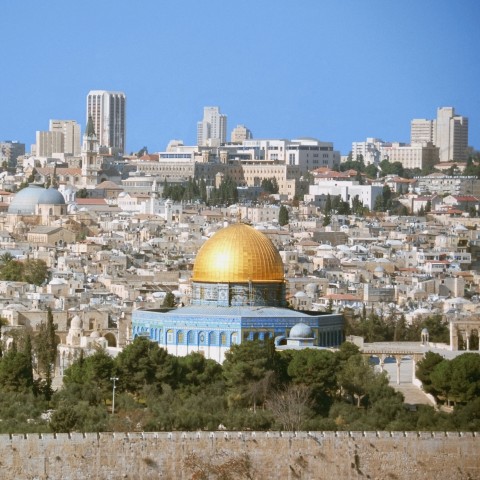
 Table of Contents
Table of Contents
- Before You Go – לפני הנסיעה (Lifney ha-Nesi’ah)
- Must-See Places for Shorter Trips (1-3 Days)
- Highly Recommended Places for a Longer Trip (4-7 Days or Longer)
- Bonus: Survival Hebrew for Your Trip
- Make the Most of Your Trip and Prepare in Advance with HebrewPod101
Before You Go – לפני הנסיעה (Lifney ha-Nesi’ah)
To get the most out of your trip to Jerusalem, it’s best to prepare yourself with a little background information about the city’s long history as well as some basic travel info.
Obviously, you can enjoy Jerusalem even if you show up clueless. But considering the thousands of years of stories that the very stones seem to breathe, acquainting yourself even briefly with the city’s history will definitely make for a more meaningful visit.
We’ll also look at the layout of Jerusalem’s Old City, discuss when the tourist season is, and cover a basic packing list to help you show up prepared for any eventuality.
- → Before you head out, we also recommend you learn these useful Hebrew Words Related to Travel and review our list of the Top 10 Ways to Prepare for Travel in Hebrew.
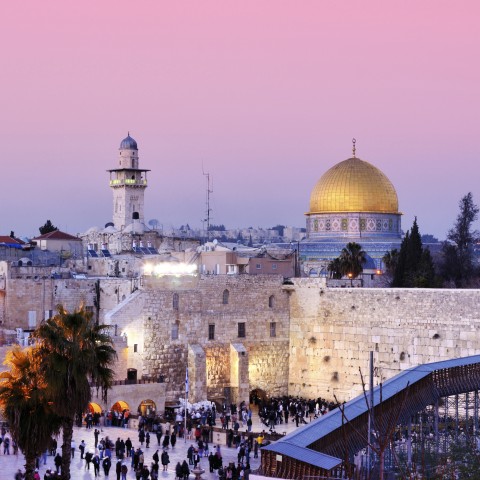
A Short History of the Holy City
ירושלים (Yerushalayim), or Jerusalem, is located in the Judean Mountains, or הרי יהודה (Harey Yehudah), between the Mediterranean Sea (Ha-Yam ha-Tikhon) and the Dead Sea, or ים המלח (Yam ha-Melakh).
Though there is evidence that Jerusalem may have been first inhabited by humans as early as the Early Bronze Age, some 5,500 years ago, the city is believed to have risen to prominence sometime between the eleventh and tenth centuries BCE. During this time, it was the capital of the Israelite United Monarchy as established under King David and consolidated under his son, King Solomon.
King Solomon is credited with building the Holy Temple, called בית המקדש (Beyt ha-Mikdash) in Hebrew. To this day, it remains the locus of Jewish prayer and the holiest place on Earth for Jews. Remnants of the Temple, most notably the Western Wall, or הכותל המערבי (Ha-Kotel ha-Ma’aravi), still draw in pilgrims from all over the world. It’s customary to place pieces of paper with prayers written on them between the cracks of the stones of this ancient wall.
The Babylonians occupied Jerusalem in 586 BCE, destroyed the Holy Temple, and exiled much of the Jewish population. Half a century later, King Cyrus the Great of Persia defeated the Babylonians and invited back the exiled Jews and allowed them to rebuild their Holy Temple in Jerusalem. This rebuilt Temple stood as the Jewish center of political and religious power until the Roman Exile in the year 70 CE, when the Temple was once again destroyed—this time without being rebuilt. In-between its two destructions, it’s worth mentioning that the Temple was sacked, looted, and defiled (though not destroyed) by the Hellenistic Seleucid Empire under Antiochus IV Epiphanes when he invaded and occupied Israel and Jerusalem in 168 BCE. The Temple was eventually won back and rededicated by the Maccabees.
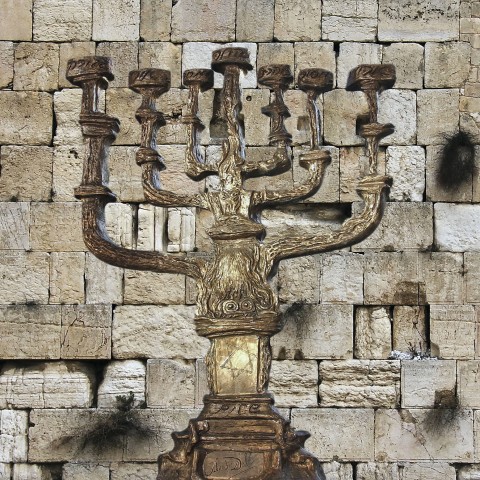
Following the Roman Exile, Jerusalem pertained to the Roman, Byzantine, and Sassanid Empires, then a myriad of Muslim Caliphates interspersed with brief periods of Christian Crusader rule, and followed by long periods under Mamluk (and later, Ottoman) rule. The latter ended in World War I, when the British defeated the Turks in the Sinai and Palestine Campaign, the result of which saw British rule over the region—including Jerusalem—under the British Mandate. Jerusalem was finally returned to Jewish hands in 1948, with the British exit from then-Palestine following the U.N. vote to partition the region to an Arab and Jewish state.
Afterwards, Jerusalem was to be divided in the course of the imminent War of Independence, with east Jerusalem (including the Western Wall) falling outside Israeli control. Jerusalem was declared reunified by Israel in 1967 during the Six Day War and made its capital, with Israeli government organs moving there from the city of Tel Aviv.
Today, Jerusalem bears traces, architectural and otherwise, of all the different stages of its long history of conquests. Indeed, one can literally trace the timeline of history by visiting different places in the city that pertained to different empires over the course of time.
And on top of all this history, of course, Jerusalem is home to a kaleidoscope culture forged by the fusion between old and new stories, local traditions, and the rainbow of influences from the ongoing influx of immigrants and tourists. It’s a unique case of the ancient and the modern in symbiosis.
The Weather in Jerusalem
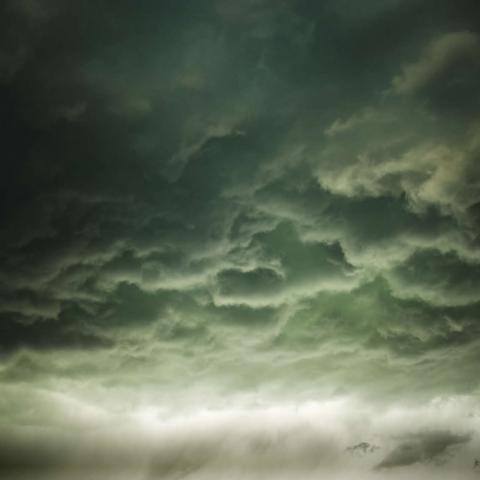
Jerusalem sees little to no precipitation between May and October. April, May, and October are the most pleasant of these months, with average temperatures between 20º Celsius (68° Fahrenheit) and 25º Celsius (77° Fahrenheit). July and August are the warmest months, with average temperatures of 28° Celsius (82° Fahrenheit), although it obviously can and does get hotter. June and September are also still quite warm, but the good news is that throughout this period without precipitation, Jerusalem, with an elevation of 785 meters (2,575 feet) above sea level, remains fairly dry. Obviously, the elevation also contributes to cooler evening temperatures than one might find along Israel’s coastal plain, for example.
The rainy season sets in toward the end of October and typically lasts into April. January is usually the coldest and wettest month, with an average high temperature of 11° Celsius (51° Fahrenheit). It can and does also snow in Jerusalem, thanks to the elevation, though most of the city’s precipitation comes in the form of cold rain.
When to Visit Jerusalem
Taking the climate into account, the best time to visit Jerusalem weather-wise is from April to May and from October to November, when the weather is usually mild and pleasant. However, major Jewish holidays may fall during these time frames—namely the High Holy Days, Sukkot, and Passover—and the city will inevitably be packed, regardless of the weather.
Old City vs. New City Jerusalem
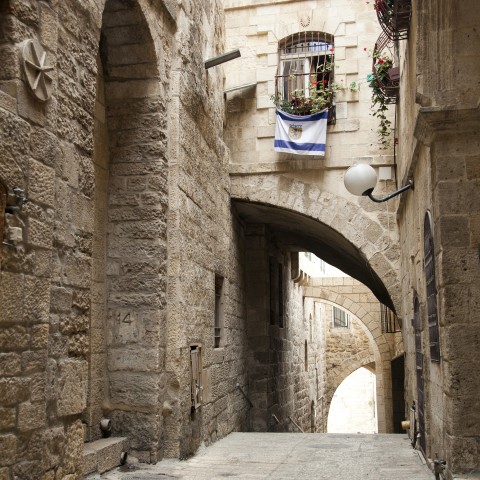
A general fact about Jerusalem you should be aware of is that it’s divided into the Old City, or העיר העתיקה (Ha-’Ir ha-’Atikah), which is delineated by the old city walls, and the rest of Jerusalem, which is quite sprawling.
A UNESCO World Heritage Site, the Old City represented the extent of Jerusalem’s development until the first Jewish settlement outside the walls in the nineteenth century. Beyond, at the time, lay an expanse of wilderness, with the added deterrent of desert marauders plundering wayfarers. The Old City contains the lion’s share of historic sites tourists tend to visit, including the city’s walls and gates themselves. That said, there’s also plenty of history to be found outside the Old City limits.
Though today it’s a large and spread-out city, the New City was slow in coming at the start. Between 1859 and 1860, in light of overcrowding and generally poor conditions within the city walls, Jewish benefactors Moses Montefiori and Judah Touro built the first Jewish settlement outside of them. Mishkenot Sha’ananim (משכנות שאננים, literally: “Peaceful Habitations”) was a hard sell at first, despite the improved housing it offered. It was in territory subject to Bedoin attacks, lying as it did outside the protection of Jerusalem’s walls. However, Jews were ultimately incentivized to move there, and a protective wall and gate were constructed around the neighborhood for added protection.
Two additional Jewish neighborhoods were built outside the city walls in 1869: Mahane Israel (מחנה ישראל, literally: “The Camp of Israel”) and Nahalat Shiv’a (נחלת שבעה, literally: “The Seven’s Estate,” in reference to the seven families who founded it). This marked a trend that slowly picked up momentum, and which has continued to boom ever since.
Language in Jerusalem

Even if your Hebrew is basic or non-existent, you’ll be able to get by just fine in Jerusalem. Public officials, such as police, and most people under age fifty should speak some English—at least enough to direct a tourist. However, Hebrew will no doubt get you much further, so it’s wise to brush up before your visit. You’ll also find plenty of Arabic speakers, especially in the Muslim Quarter of the Old City and in East Jerusalem. Thanks to more recent waves of immigration, you may also find speakers of just about any other language you can think of, most notably Russian, Amharic, and French.
Essential Packing List
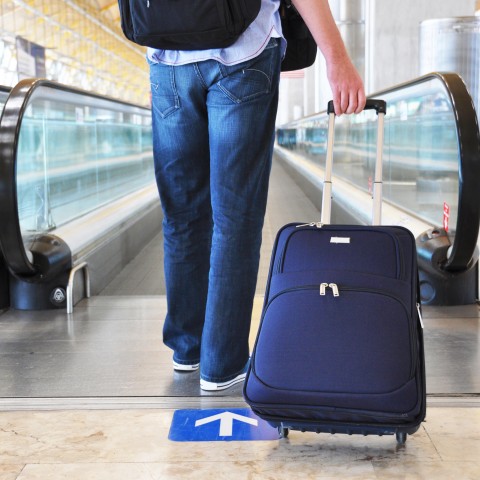
While everyone’s packing list will be somewhat unique, the following is a list of essential items you would be wise to bring with you on your trip to Jerusalem.
- Clothes suitable for the time of year you’re traveling, plus something warmer or cooler for evenings, sudden changes of temperature, outings to the beach or desert, etc.
- A rain jacket or umbrella, if you’re traveling during the rainy season
- Gloves, a scarf, and warm outerwear for cold weather (You’d be surprised how cold Jerusalem can feel, even if the thermometer isn’t reading as low as you would think!)
- Sunglasses—a must!
- A brimmed hat or other head covering
- Sunscreen
- Comfortable shoes or sandals for walking
- A water bottle
- Maps to navigate
- A journal to record your experiences
- A camera or your cellphone for snapping selfies
- Modest clothing if you plan on entering any holy sites or neighborhoods
- Your best negotiation skills for haggling at the market!
Must-See Places for Shorter Trips (1-3 Days)

Now that we’ve covered Jerusalem’s history and have our suitcases packed, let’s take a look at the top five places you should put on your Jerusalem travel list.
1. The Old City – העיר העתיקה (Ha-’Ir ha-’Atikah)
As mentioned earlier, the Old City is the geographic and historical heart of Jerusalem—this makes it one of those places you must visit in Jerusalem to make your trip complete. There are four quarters of the Old City: the Jewish Quarter, the Muslim Quarter, the Christian Quarter, and the Armenian Quarter. Each quarter has its own attractions, so let’s have a brief look at each one.
Jewish Quarter – הרובע היהודי (Ha-Rova’ ha-Yehudi)
The Jewish Quarter centers around the Western Wall Plaza, with steps and alleys winding out of the broad open space into a tight labyrinth of a neighborhood. The main attraction is obviously the Western Wall itself.
Note that there’s a men’s side and a women’s side, and that men should wear a head covering and women modest clothing if approaching the wall.
While the Western Wall is the last exposed remnant of the ancient Holy Temple, you can also explore tunnels with access to additional excavated remnants. Apart from the Western Wall, the Cardo is another great spot. Dating from Byzantine times, these are remnants of the original colonnaded structures that lined what was the city’s main thoroughfare in Roman times.
Muslim Quarter – הרובע המוסלמי (Ha-Rova’ ha-Muslemi)
The Muslim Quarter is more crowded and active than the sleepier Jewish Quarter, and its main attraction is the market section where you can buy all sorts of goods—both cheap and luxury, genuine and imitation. Just be sure to pack your bartering skills, as price tags are definitely only a suggestion (if they can be found at all). It’s also a great place to grab some authentic חומוס (khummus), or “hummus,” and Arabic pastries, or to smoke a נרגילה (nargilah), or “hookah.”
Christian Quarter – הרובע הנוצרי (Ha-Rova’ ha-Notzri)
The Christian Quarter is home to about forty sites holy to Christians, and is therefore a destination for priests and pilgrims from across the globe. At its heart lies the Church of the Holy Sepulchre, where Jesus is believed to be buried according to some traditions. The Via Dolorosa passes through the Christian Quarter, as well as the Armenian Quarter.
Armenian Quarter – הרובע הארמני (Ha-Rova’ ha-Armeni)
The smallest quarter, the Armenian Quarter, is full of surprises. As Armenia was the first country to adopt Christianity as its official religion, the Armenion Church long held a place of importance in Christendom, though its influence has waned with the years. This quarter is a peaceful collection of ancient churches. Be sure to check out St. Mark’s Chapel, the St. James Cathedral, and the Armenian Compound and its Armenian museum.
2. Mahane Yehuda Market – שוק מחנה יהודה (Shuk Makhaneh Yehudah)
Simply put, this is one of the greatest open markets on Earth. Part open and part roofed, the market offers an endless array of colors, smells, sounds, and, of course, tastes. Peruse the stalls of vegetable and fruit vendors half-singing, half-shouting at each other across the alleyway as they compete over who has the best or cheapest produce. Or stop for some exquisite coffee or delicious food in one of the many hole-in-the-wall cafés and restaurants tucked between and behind the carts of wares.
The Shuk is a great place to buy anything from food to hardware to souvenirs. Just be sure to shop around and check out the prices before you commit. And definitely try some of the local specialties, such as:
- זיתים (zeytim) – “olives,” of which you’ll see more varieties than you would have thought possible
- חלווה (khalvah) – a pastry made from tahini paste
- בורקס (burekas) – baked pastries made of a thin flaky dough and filled with cheese, spinach, etc.
3. City of David – עיר דוד (‘Ir David)
One of Jerusalem’s most active archaeological sites, this is a must for any lover of history. The oldest part of Jerusalem, it was settled during the Canaanite period. According to the Bible, King David captured the city and brought the Ark of the Covenant there some 3,000 years ago.
There have been excavations since the 1850s, so there’s always something interesting to see, including new finds. The site’s highlights include the ancient waterways that fed the city in times of old, the first palace built in the city, and even an ancient necropolis. Be sure to wear clothes and footwear you don’t mind getting wet.
You can explore the above-ground portion of this site for free, but it’s well worth paying for admission to the underground portion, and even hiring a licensed guide to give you a tour.
4. Mt. of Olives – הר הזיתים (Har haZeitim)
This site is famous among both Jews and Christians for religious reasons; even the non-religious love this site for its stunning vistas of Jerusalem’s landscape. From the top, you can see the Old City and Temple Mount, as well as the surrounding Hinom Valley, or גיא בן הינום (Gai ben Hinom), and Judean Desert, or מדבר יהודה (Midbar Yehudah).
Landmarks along the Mt. of Olives include several churches (such as the Lutheran Church of the Ascension and the Russian Orthodox church of the same name), as well as the Seven Arches Hotel. In addition, the Jewish Cemetery on the Mt. of Olives is the oldest and most important cemetery for Jews. Religious Jews believe that their bodies will be resurrected when the Messiah comes to rebuild the Holy Temple in Jerusalem. Therefore, it’s considered an honor to be buried close to where it’s believed this will take place.
5. Haram Al-Sharif – הר הבית (Har ha-Bayit), “Temple Mount”
Holy to Jews, Christians, and Muslims alike, this is the site where Abraham is said to have been ordered to offer his son up as a sacrifice to God. It’s also the spot where Solomon founded the Holy Temple, and the Prophet Muhammad is said to have ascended to Heaven from here.
The plaza, which many Jews consider taboo to enter, hovers above the Old City and is centered around the Dome of the Rock. It’s perhaps Jerusalem’s most iconic landmark. The southern side of the mount is home to one of the oldest mosques in the world: the Al-Aqsa Mosque. Note that while the plaza is open to people of all religious denominations, non-Muslim visitors are prohibited from entering the Dome of the Rock or the Al-Aqsa Mosque, as well as from praying anywhere on the site.
Highly Recommended Places for a Longer Trip (4-7 Days or Longer)
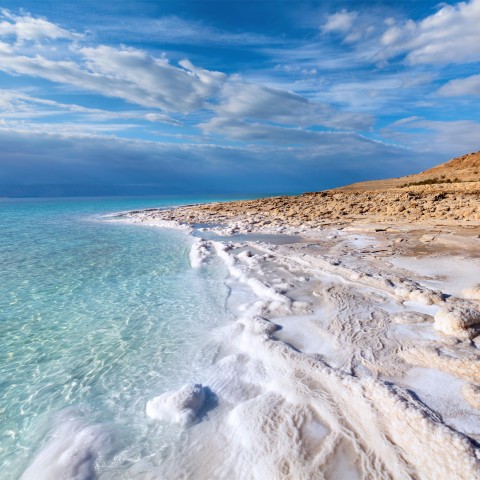
If you have a bit more time to spend here, we would like to recommend a few additional things to visit in Jerusalem and the surrounding areas. Let’s have a look.
6. Israel Museum – מוזיאון ישראל (Muze’on Yisra’el)
This museum covers nearly 50,000 square meters and has a six-acre sculpture garden. It features all manner of collections, from prehistoric archaeology to contemporary art. There’s also a phenomenal variety of Judaica and Jewish arts from different Jewish communities across the world, and from different time periods. The museum’s children’s wing is its most interactive section, and there are special events and activities available for kids during Jewish holidays and school vacations.
7. Tisch Family Zoological Gardens in Jerusalem – גן החיות התנ”כי בירושלים על שם משפחת טיש (Gan ha-Khayot ha-Tanakhi be-Yerushalayim ‘al Shem Mishpakhat Tish)
Popularly known as the Jerusalem Biblical Zoo, this zoo is located in Jerusalem’s Malha neighborhood. Its most notorious feature is its Afro-Asiatic wildlife collection, which showcases many animals that were described in the Hebrew Bible. It has also had much success breeding endangered species.
The zoo, much of which is designed in an open format, features animals and birds kept in their natural habitats, ranging from an African savannah to a tropical rainforest, and even to an underground world of mice and cockroaches. Each animal or bird mentioned in the Bible has a display showing the relevant Biblical verse in Hebrew, Arabic, and English.
8. Yad Vashem – יד ושם, literally: “Hand and Name”
This museum is dedicated to the Holocaust, its victims, and its survivors; although visiting is definitely an intense experience, it commemorates an integral part of Israel’s story and the story of the Jewish people in general.
Located on Mount Herzl, or הר הרצל (Har Hertzel), the memorial consists of a research institute in addition to other centers of education. You’ll also find the International School/Institute for Holocaust Studies as well as the widely visited Holocaust History Museum. The latter includes the Children’s Memorial, the Hall of Remembrance, and the Museum of Holocaust Art.
9. Dead Sea – ים המלח (Yam ha-Melkah), “Salt Sea”
If you have the time, this is one of the best places to visit near Jerusalem for a fun day trip. The lowest point on Earth, the main attraction of the Dead Sea is its salty waters, whose salt concentration is 34%, ten times more than seawater. Typically, visitors enjoy floating effortlessly in the water, which is impossible to really swim in due to the salinity. Additionally, the mud from the bed and shore of the Dead Sea is considered the world over to do dermatological wonders. For this reason, mud baths, rubs, and massages are quite popular here.
10. Ein Gedi (עין גדי)
Another fantastic day trip is Ein Gedi, a reserve on the same route as that to the Dead Sea. This desert oasis features two parallel canyons, known as Wadi David (נחל דוד) and Wadi Arugot (נחל ערוגות), each one boasting stunning sights and hiking trails. These short walks go along streams that lead to year-round waterfalls and freshwater pools to take a dip in; you’ll also find yourself surrounded by surprisingly lush vegetation in the heart of the desert. The reserve is also populated by Nubian ibex and boulder-dwelling hyraxes, and it features the ruins of an ancient synagogue with a stunning fifth-century mosaic floor.
Bonus: Survival Hebrew for Your Trip
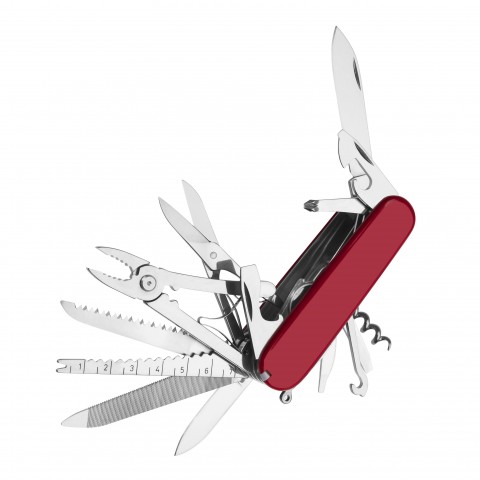
Finally, let’s take a look at some of the most useful words and phrases to practice before your trip to Jerusalem (or even during your flight there!). Just like in any other country, knowing a few words—and even just the fact that you’ve made the effort—can go a long way with the locals, even if they speak English.
- שלום
Shalom.
“Hello.” / “Goodbye.” (literally: “Peace.”)
- תודה
Todah.
“Thanks.”
- להתראות
Lehitra’ot.
“See you later.”
- סליחה
Slikha.
“Sorry.”
- יופי
Yofi.
“Nice.” / “Great.”
- אני לא מבין/מבינה
Ani lo mevin/mevinah.
“I don’t understand.”
- איפה השירותים?
Eyfoh ha-sherutim?
“Where is the bathroom?”
- כמה זה עולה?
Kamah zeh oleh?
“How much does this cost?”
- אקח אותו!
Ekakh oto!
“I’ll take it!”
- הצילו!
Hatzilu!
“Help!”
Make the Most of Your Trip and Prepare in Advance with HebrewPod101
As I’m sure you can see, Jerusalem and Israel in general are fascinating places to explore, full of culture, history, and more. For such a small country, Israel contains quite a variety of sights, experiences, and even micro-climates.
But why not make your trip even more meaningful by learning something about where you’re going and the people who live there? After all, there’s nothing quite as satisfying as traveling abroad and being able to communicate with the locals in their own language, especially if you also know something about their country and culture.
We at HebrewPod101 are dedicated to providing you with enriching materials that will not only help you learn Hebrew, but also get you acquainted with Israel, Israeli and Jewish culture, and anything else that can make your experience with the language and country more meaningful and interesting.
We hope you have a wonderful trip to Jerusalem! But before you book your flight, is there anything we missed? Feel free to get in touch and let us know if there’s anything else you’d like to know about Jerusalem, Israel as a whole, or the Hebrew language in general. Shalom!










